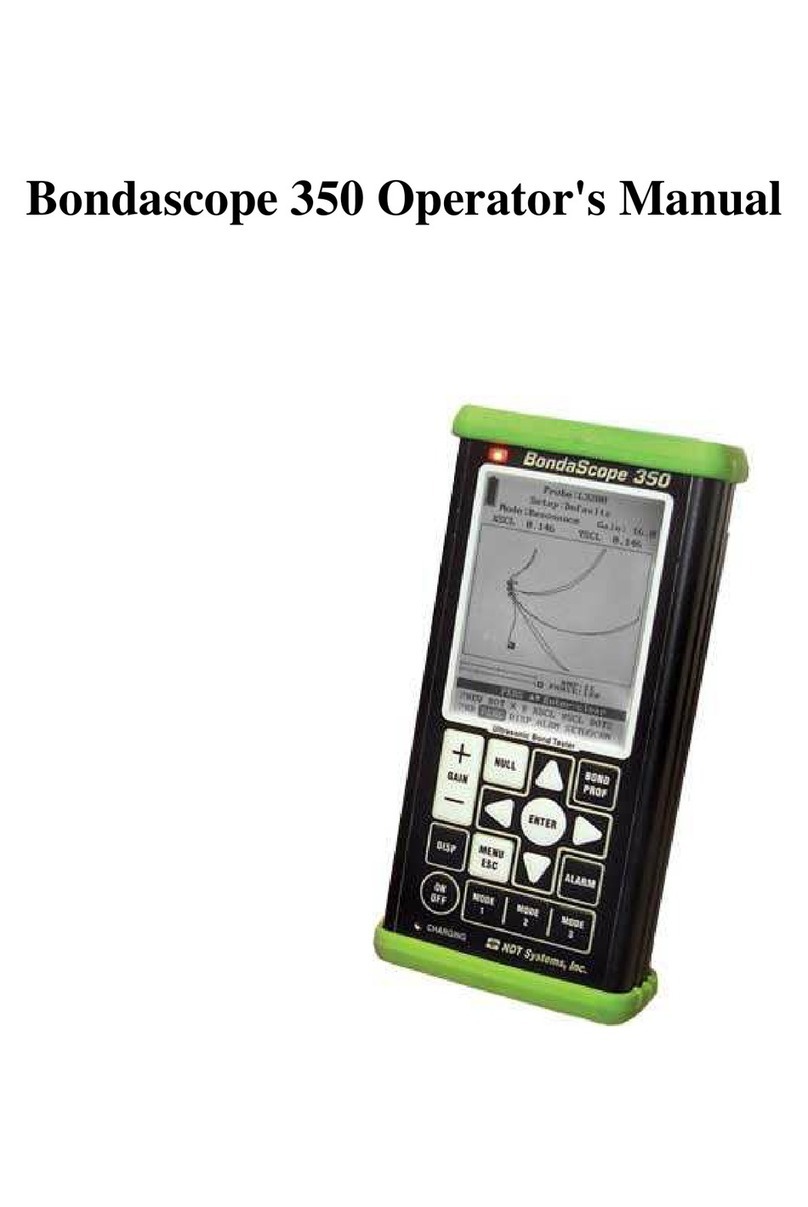
AVENGER II User Manual
3 | Page NDT Systems, Inc. 5542 Buckingham Drive, Huntington Beach, CA 92649, PH: 714-893-2438
2. Principal of Operation
The AVENGER II is a single channel Ultrasonic Flaw Detector used for the
inspection of homogeneous material for the presence of inclusions, porosity,
and other discontinuities. It can also be used for thickness gauging of
homogeneous material, requiring access from only one side of the test piece.
High frequency sound (Ultrasonic sound) waves are introduced into the test
material/part from a transducer/probe that is coupled to the test piece,
usually by water or other suitable coupling liquid. The transducer converts
electric signals to Ultrasound and vice versa. A short burst of Ultrasound is
introduced into test material. The reflection of the ultrasound energy is a function of the ratio between
the acoustic impedance of the discontinuity and the base material. The greater the impedance ratio, the
more sound energy will be reflected. The principle of Ultrasonic testing is shown in fig. 1. It shows the
ultrasonic energy generated in the test piece and resultant instrument display.
Thickness gauging with the AVENGER II operates on the principle of the time-of-flight measurement.
This principle utilizes the precise timing of the transit time of a short burst of ultrasound energy, through
a material under test. The ultrasound waves travel to the far side of the test piece and return to the
transducer/probe. The round-trip time is recorded and multiplied by a material velocity to produce a
thickness measurement.
Three types of transducers are available for different applications:
Straight beam Probe: This probe introduces ultrasound normal to the test piece
surface utilizing longitudinal or compression waves. Normal beam probes are
used mostly for flaw detection and thickness gauging (figure 1.)
TR probe: This probe contains a transmitter and receiver element (figure 2). This
design improves near surface resolution by setting the initial pulse from the
received echoes. TR probes produce better near surface resolution, especially
useful on pitted and corroded surfaces.
Angle Beam Probe: This probe introduces ultrasound at an angle to the surface
of the test piece (figure 3). The wave energy is mode converted from a
longitudinal wave to a shear wave by the refraction principle. Angle beam
probes are useful for weld inspections and detection of flaws perpendicular to
the test surface. The reason for this is its ability to position the transducer/probe
away from the weld bead yet propagate energy into the weld zone. Another
reason to use angle beam testing on the welds is to position the sound beam
more normal to the expected discontinuities.




























